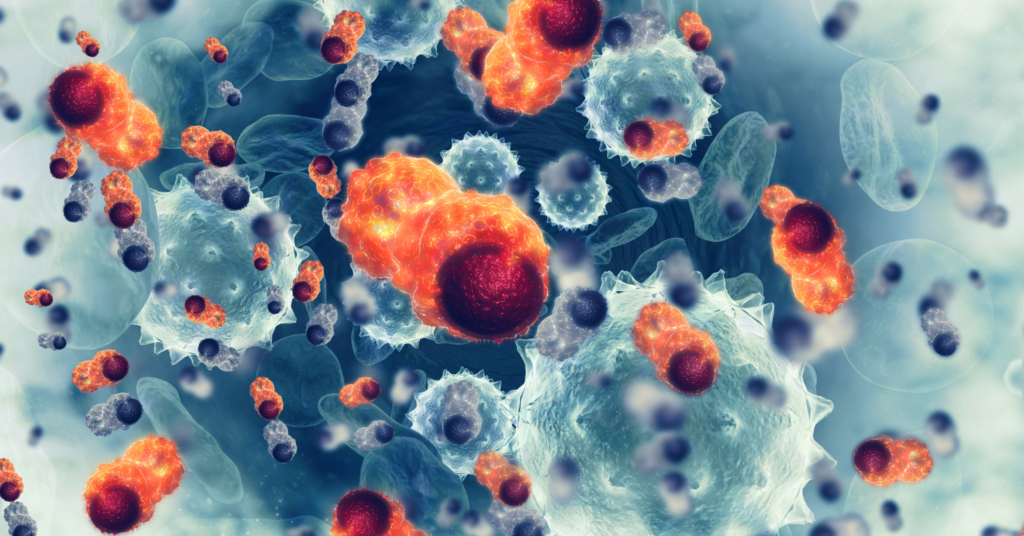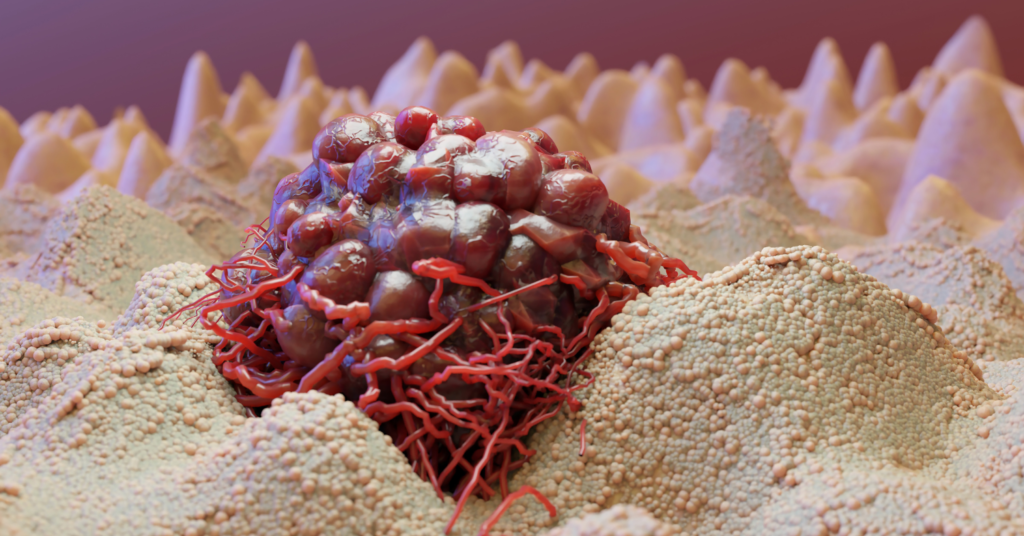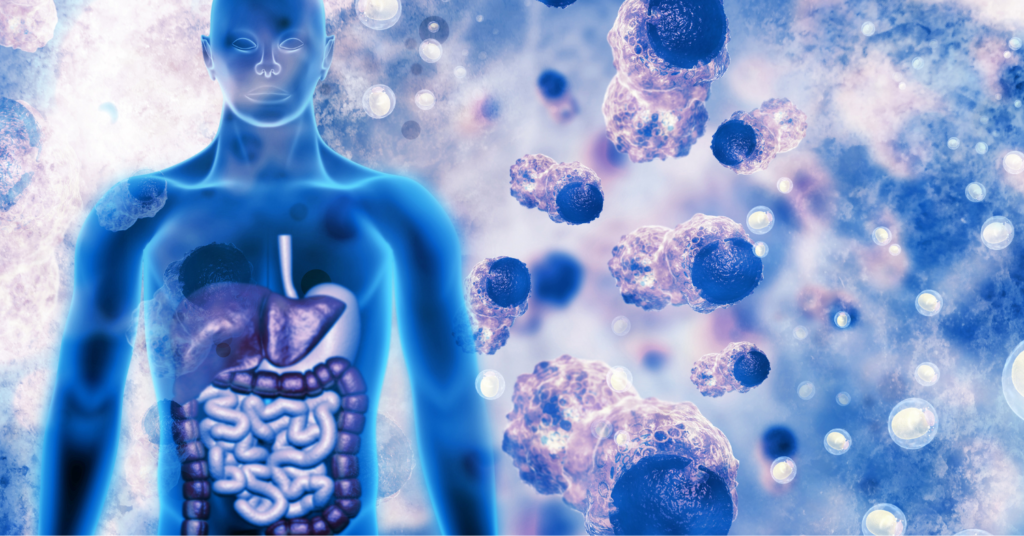Table of Contents
Introduction

Definition of cancer – Cancer is a complex and often devastating group of diseases characterized by the uncontrolled growth and division of abnormal cells within the body. These cells can invade nearby tissues and organs, forming masses of tissue called tumors. Cancer can develop in virtually any part of the body and may eventually spread to other areas, a process known as metastasis.
Importance of cancer care awareness – Cancer is a leading cause of death worldwide, affecting millions of people and their families. Being aware of the prevalence and impact of cancer is crucial for individuals and communities. Raising awareness helps in early detection, better treatment options, and improving overall cancer outcomes. Additionally, increased awareness can promote healthier lifestyles and reduce risk factors associated with cancer development.
Purpose of the blog post – The purpose of this blog post is to provide a comprehensive understanding of cancer, including its causes, various types, prevention strategies, and treatment options. By the end of this article, readers should have a clear grasp of the multifaceted nature of cancer, its risk factors, and the steps they can take to minimize their own risk or support loved ones in their journey against cancer. We aim to equip you with knowledge to navigate the world of cancer more confidently and empower you to make informed decisions about your health and well-being.
The Basics of Cancer

What is cancer?
Uncontrolled cell growth – Cancer begins when the normal control mechanisms of the cell stop working. Old cells do not die and instead form a mass of tissue called a tumor. These cells can continue to divide uncontrollably, crowding out healthy cells and interfering with the body’s normal functions.
Formation of tumors
Tumors are abnormal growths of cells that can be either benign (non-cancerous) or malignant (cancerous). Benign tumors do not invade nearby tissues or spread to other parts of the body and are usually less dangerous. In contrast, malignant tumors are cancerous and can invade nearby tissues, damage organs, and metastasize to other parts of the body, making them potentially life-threatening.
Common misconceptions about cancer
Several misconceptions about cancer can lead to confusion and fear. It’s essential to dispel these myths to have a more accurate understanding of the disease.
- Cancer is always a death sentence – While cancer can be a serious and life-threatening condition, advances in early detection and treatment have significantly improved survival rates. Many individuals diagnosed with cancer go on to live long, fulfilling lives.
- Cancer is contagious – Cancer is not contagious and cannot be spread through physical contact, such as touching or hugging someone with cancer. It is a result of genetic mutations within the affected person’s cells.
- Only older people get cancer – While the risk of cancer increases with age, people of all ages, including children, can develop cancer. It is not limited to a specific age group.
- Surgery causes cancer to spread – Surgical removal of cancerous tumors is a standard treatment and does not cause cancer to spread. Surgeons take precautions to prevent the spread of cancer during surgery.
- Cancer is caused by bad luck – While genetic mutations can occur randomly, many cases of cancer are linked to known risk factors, such as smoking, diet, and exposure to carcinogens. Lifestyle choices and environmental factors play a significant role in cancer development.
Understanding these fundamental aspects of cancer and dispelling common misconceptions is the first step in gaining a more informed perspective on this complex disease.
Causes of Cancer

Genetic factors
- Family history – Family history plays a significant role in cancer risk. If close relatives, such as parents, siblings, or children, have had cancer, your risk may be higher due to shared genetic factors. However, having a family history of cancer does not guarantee that you will develop the disease.
- Inherited mutations -Some individuals inherit specific genetic mutations that increase their susceptibility to certain types of cancer. Examples include BRCA1 and BRCA2 mutations associated with breast and ovarian cancer or Lynch syndrome linked to colorectal and other cancers.
Environmental factors
- Tobacco and smoking – Smoking is a well-established risk factor for various cancers, including lung, mouth, throat, esophagus, pancreas, and bladder cancer. It exposes the body to harmful carcinogens, leading to DNA damage and uncontrolled cell growth.
- Diet and nutrition – A diet high in processed foods, red and processed meats, sugary beverages, and low in fruits and vegetables can increase cancer risk. Conversely, a balanced diet rich in fruits, vegetables, whole grains, and lean proteins can help reduce the risk of developing cancer.
- Exposure to carcinogens – Carcinogens are substances that can cause cancer. They can be found in various environmental factors, such as air pollutants, industrial chemicals, and radiation. Prolonged exposure to these carcinogens can lead to genetic mutations and cancer development.
Lifestyle factors
- Physical inactivity – Lack of physical activity and a sedentary lifestyle are associated with an increased risk of cancer. Regular exercise not only promotes overall health but also helps reduce the risk of cancer by maintaining a healthy body weight and improving immune function.
- Alcohol consumption – Excessive alcohol consumption is a known risk factor for several types of cancer, including breast, liver, mouth, throat, and esophageal cancer. Limiting alcohol intake or avoiding it altogether can lower cancer risk.
- UV radiation – Exposure to ultraviolet (UV) radiation from the sun or tanning beds can cause skin cancer, including melanoma. Protecting your skin from excessive UV exposure through sunscreen use and wearing protective clothing is essential.
Infectious agents
- Viruses and cancer – Some viruses, such as human papillomavirus (HPV), hepatitis B and C, and Epstein-Barr virus (EBV), can increase the risk of developing certain cancers. Vaccinations, regular screenings, and practicing safe sex can help reduce the risk of virus-related cancers.
- Bacteria and cancer – Infections with certain bacteria, such as Helicobacter pylori (H. pylori), can lead to stomach cancer. Proper hygiene and treatment of bacterial infections can help prevent associated cancer risks.
Understanding these various causes of cancer is crucial for making informed choices and adopting preventive measures to reduce your cancer risk.
Types of Cancer

Carcinoma
- Skin cancer – Skin cancer is the most common type of cancer worldwide. It develops in the skin’s outermost layer and is often caused by prolonged exposure to ultraviolet (UV) radiation from the sun or tanning beds. Common types of skin cancer include basal cell carcinoma, squamous cell carcinoma, and melanoma.
- Lung cancer – Lung cancer primarily affects the lungs and is predominantly caused by tobacco smoke, including cigarette and cigar smoke. There are two main types of lung cancer: non-small cell lung cancer (NSCLC) and small cell lung cancer (SCLC). Early detection and smoking cessation are critical in managing lung cancer.
Sarcoma
- Bone cancer – Bone cancer, also known as primary bone cancer, originates in the bones and can affect any bone in the body. Examples of bone cancers include osteosarcoma and Ewing sarcoma. Treatment often involves surgery, chemotherapy, and radiation therapy.
- Soft tissue sarcomas – Soft tissue sarcomas develop in the body’s soft tissues, such as muscles, tendons, and connective tissues. These cancers are less common than carcinomas but can occur anywhere in the body. Types of soft tissue sarcomas include liposarcoma, leiomyosarcoma, and synovial sarcoma.
Leukemia
- Acute lymphoblastic leukemia (ALL) – ALL is a rapidly progressing cancer that affects the bone marrow and blood. It is most commonly diagnosed in children but can occur in adults as well. Treatment for ALL typically involves chemotherapy and sometimes stem cell transplantation.
- Chronic myeloid leukemia (CML) – CML is a slow-growing leukemia that primarily affects adults. It results from a genetic mutation and affects the bone marrow’s production of white blood cells. Targeted therapies, such as tyrosine kinase inhibitors, have revolutionized the treatment of CML.
Lymphoma
- Hodgkin lymphoma – Hodgkin lymphoma is a type of cancer that originates in the lymphatic system. It is characterized by the presence of Reed-Sternberg cells. Hodgkin lymphoma typically starts in lymph nodes and can spread to other parts of the body. Chemotherapy, radiation therapy, and immunotherapy are common treatment approaches.
- Non-Hodgkin lymphoma – Non-Hodgkin lymphoma encompasses a diverse group of lymphatic system cancers that do not involve Reed-Sternberg cells. These lymphomas can develop in various lymphoid tissues, including lymph nodes, spleen, and bone marrow. Treatment options depend on the specific subtype and stage of the disease.
Central nervous system (CNS) cancers
- Brain tumors – Brain tumors can arise in the brain or its surrounding structures. They can be benign (non-cancerous) or malignant (cancerous). Treatment may involve surgery, radiation therapy, chemotherapy, or a combination of these modalities, depending on the tumor type and location.
- Spinal cord tumors – Spinal cord tumors develop within or near the spinal cord. They can be either primary (originating in the spinal cord) or secondary (resulting from metastasis from other cancer sites). Management may involve surgical resection, radiation therapy, or other specialized treatments.
Understanding the various types of cancer is essential for accurate diagnosis, appropriate treatment planning, and improved outcomes for individuals facing these conditions.
Detecting Cancer

Common signs and symptoms – Recognizing the common signs and symptoms of cancer is crucial for early detection and timely intervention. While the specific symptoms can vary depending on the type and stage of cancer, some general warning signs may include –
- Unexplained weight loss
- Fatigue and weakness
- Persistent pain
- Changes in the skin, such as new moles or skin lesions
- Changes in bowel or bladder habits
- Difficulty swallowing
- Persistent cough or hoarseness
- Changes in breast appearance or lumps
- Abnormal bleeding or discharge
- Swelling or lumps in the neck, underarms, or elsewhere
Diagnostic tools – Imaging tests (X-rays, MRI, CT scans) – Various imaging techniques are used to visualize the inside of the body and detect abnormalities that may indicate cancer –
- X-rays – Used to create images of bones and some soft tissues.
- MRI (Magnetic Resonance Imaging) – Provides detailed images of soft tissues, including the brain, muscles, and organs.
- CT scans (Computed Tomography) – Combines X-ray technology with computer processing to create cross-sectional images of the body, allowing for detailed examination of internal structures.
Biopsy – A biopsy is a critical diagnostic procedure where a sample of tissue or cells is removed from the suspicious area for laboratory analysis. Types of biopsies include –
- Needle biopsy – Uses a thin needle to extract cells or tissue.
- Surgical biopsy – Involves the removal of a larger tissue sample through surgery.
- Endoscopic biopsy – Uses a thin, flexible tube with a camera and tools to collect tissue samples from the gastrointestinal tract or other internal areas.
Blood tests – Blood tests can provide valuable information about the presence of cancer or its markers, such as tumor markers or specific proteins associated with certain cancers. For example, the prostate-specific antigen (PSA) blood test is used for prostate cancer screening, and the CA-125 blood test is employed for ovarian cancer detection.
Importance of early detection – Early detection of cancer is crucial because it can significantly improve treatment outcomes and increase the chances of a full recovery. When cancer is detected at an early stage, it is often more localized and easier to treat. Timely intervention can also help reduce the need for aggressive treatments and improve the quality of life for individuals affected by cancer. Regular screenings, self-examinations, and awareness of risk factors are essential for achieving early detection and better overall prognosis.
Preventing Cancer
Healthy lifestyle choices
- Diet and nutrition – A balanced diet rich in fruits, vegetables, whole grains, and lean proteins can help reduce the risk of many cancers. Avoiding processed foods, sugary beverages, and excessive red and processed meats is recommended.
- Physical activity – Regular physical activity can help maintain a healthy weight and reduce the risk of several cancers. Aim for at least 150 minutes of moderate-intensity exercise or 75 minutes of vigorous-intensity exercise per week.
- Smoking cessation – Quitting smoking is one of the most significant steps you can take to prevent cancer, particularly lung, mouth, throat, and many other types. Seek support and resources to quit smoking if you are a smoker.
- Limiting alcohol consumption – Excessive alcohol consumption is linked to several cancers, including breast, liver, mouth, throat, and esophageal cancer. Limiting alcohol intake or abstaining can reduce cancer risk.
Vaccination
- HPV vaccine – The Human Papillomavirus (HPV) vaccine is essential for preventing cervical, anal, and oropharyngeal cancers caused by HPV infections. It is recommended for both males and females, usually starting in adolescence.
- Hepatitis B vaccine – The Hepatitis B vaccine can prevent liver cancer by protecting against hepatitis B infection, which is a known risk factor for liver cancer. It is typically administered during infancy and early childhood.
Screening programs
- Mammograms – Mammograms are screening tests for breast cancer and are recommended for women aged 40 and older, or earlier if there is a family history or other risk factors. Regular mammograms can detect breast cancer at an early, more treatable stage.
- Pap smears – Pap smears, also known as cervical cytology tests, are used to detect cervical cancer and precancerous changes in the cervix. Regular Pap smears and HPV testing are essential for early detection and prevention.
- Colonoscopies – Colonoscopies are recommended for colorectal cancer screening, typically starting at age 45 or earlier if there is a family history. These screenings can identify precancerous polyps and early-stage colorectal cancer.
Avoiding carcinogens
Carcinogens are cancer-causing substances found in various environments. Minimizing exposure to carcinogens, such as tobacco smoke, environmental pollutants, and certain chemicals, is crucial for cancer prevention. Occupational safety measures and proper protective equipment can help reduce exposure to carcinogens in the workplace.
Cancer Care & Treatment
- Surgery – Surgery involves the removal of cancerous tumors and surrounding tissues. It is a primary treatment option for many solid tumors and can be curative if the cancer is localized and hasn’t spread.
- Radiation therapy – Radiation therapy uses high-energy radiation to target and destroy cancer cells. It is often used as a standalone treatment or in combination with surgery or chemotherapy to shrink tumors or eliminate remaining cancer cells.
- Chemotherapy – Chemotherapy involves the use of drugs to kill or slow the growth of cancer cells. It is administered orally or intravenously and can be used for various types of cancer, either alone or in combination with other treatments.
- Targeted therapy – Targeted therapy focuses on specific molecules or pathways involved in cancer growth. These therapies are designed to block the growth and spread of cancer cells while minimizing damage to healthy cells.
- Immunotherapy – Immunotherapy enhances the body’s immune system to recognize and attack cancer cells. It has shown promising results in treating several types of cancer, including melanoma, lung cancer, and certain types of lymphoma.
- Hormone therapy – Hormone therapy is used for hormone-sensitive cancers, such as breast and prostate cancer. It aims to block hormones that fuel cancer growth or reduce their production.
- Palliative cancer care – Palliative cancer care focuses on improving the quality of life for individuals with advanced or terminal cancer. It addresses pain management, symptom relief, emotional support, and overall comfort for patients and their families.
The choice of cancer treatment depends on the type of cancer, its stage, and individual patient factors. Treatment plans are often developed through a collaborative effort between health, cancer care providers and patients, to achieve the best possible outcomes.
Living with Cancer & Cancer Care
Coping with a cancer diagnosis – Receiving a cancer diagnosis can be emotionally challenging. Coping strategies include –
- Seeking emotional support from loved ones, support groups, or mental health professionals.
- Gaining a clear understanding of the diagnosis, treatment options, and prognosis.
- Taking an active role in decision-making regarding treatment and cancer care.
- Managing stress through relaxation techniques, meditation, or mindfulness.
- Maintaining open communication with health & Cancer care providers to address concerns and questions.
Support systems – A strong support system is crucial for individuals living with cancer. It includes:
- Family and friends who provide emotional and practical support.
- Support groups, both in-person and online, where individuals can connect with others facing similar challenges.
- Counseling or therapy to address emotional and psychological needs.
- Palliative cancer care teams focus on symptom management and improving the patient’s quality of life.
Quality of life during treatment – Maintaining the best possible quality of life during cancer treatment involves –
- Managing treatment side effects with the help of health & Cancer care providers.
- Staying physically active within the constraints of the treatment plan.
- Eating a balanced diet to support overall health and energy levels.
- Addressing emotional and mental health needs, such as anxiety or depression, through counseling or medication if necessary.
- Engaging in activities that bring joy and fulfillment, even during treatment.
Survivorship – Survivorship refers to life after cancer diagnosis and treatment. It involves –
- Regular follow-up appointments with health & Cancer care providers to monitor for recurrence or late effects of treatment.
- Healthy lifestyle choices reduce the risk of cancer recurrence and promote overall well-being.
- Emotional and psychological support to address any lingering fears or anxieties.
- Reintegration into daily life, work, and relationships with a renewed sense of purpose.
- Advocating for ongoing cancer research and awareness to support future survivors.
Living with cancer is a journey that requires resilience, support, and a holistic approach to physical and emotional well-being. With the right resources and a positive mindset, individuals can navigate this journey and continue to lead fulfilling lives.
Conclusion
- Recap of key points – In this comprehensive blog post, we have explored the multifaceted world of cancer, covering its definition, causes, various types, prevention strategies, detection methods, treatment options, and living with a cancer diagnosis. Key points include understanding the fundamentals of cancer, dispelling common misconceptions, and recognizing the importance of early detection.
- The importance of ongoing research – Ongoing research is vital in the fight against cancer. Scientific advancements in understanding the disease, developing new treatments, and improving early detection methods are continually expanding our ability to combat cancer effectively. Supporting cancer research through funding and advocacy is crucial to drive progress.
- Encouragement for cancer awareness and prevention – Cancer awareness and prevention are powerful tools in reducing the global burden of cancer. By adopting healthy lifestyles, undergoing regular screenings, and staying informed about risk factors, we can collectively reduce the incidence of cancer and improve outcomes for those affected.
- Hope for the future in the fight against cancer – Despite the challenges posed by cancer, there is significant hope for the future. Advances in treatment modalities, personalized medicine, immunotherapy, and early detection technologies continue to improve cancer survival rates and enhance the quality of life for cancer survivors. With continued research, education, and support, we can look forward to a world where cancer is more preventable, manageable, and curable.
In closing, cancer is a complex adversary, but it is not insurmountable. Through understanding, prevention, early detection, and ongoing research, we can collectively work towards a future where cancer has a lesser impact on individuals and their families. Let us stand together in the fight against cancer and strive for a healthier, cancer-aware world.
FAQ’s About Cancer & Cancer Care
What are common cancer symptoms?
Common symptoms include unexplained weight loss, persistent pain, changes in bowel or bladder habits, unusual bleeding or discharge, and lumps or changes in skin moles.
How can I lower my cancer risk?
Reduce risk by maintaining a healthy diet, staying physically active, avoiding tobacco and excessive alcohol, getting recommended vaccinations, and protecting yourself from UV radiation.
What are the latest cancer treatments?
Recent advancements include immunotherapy, targeted therapy, and precision medicine. These treatments aim to improve outcomes and reduce side effects.
How can I support a loved one with cancer?
Offer emotional support, assist with daily tasks, and help connect them to support groups and health& Cancer care professionals for guidance and Cancer care. Your presence and empathy are crucial.

